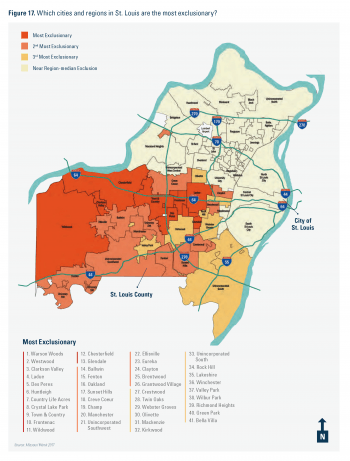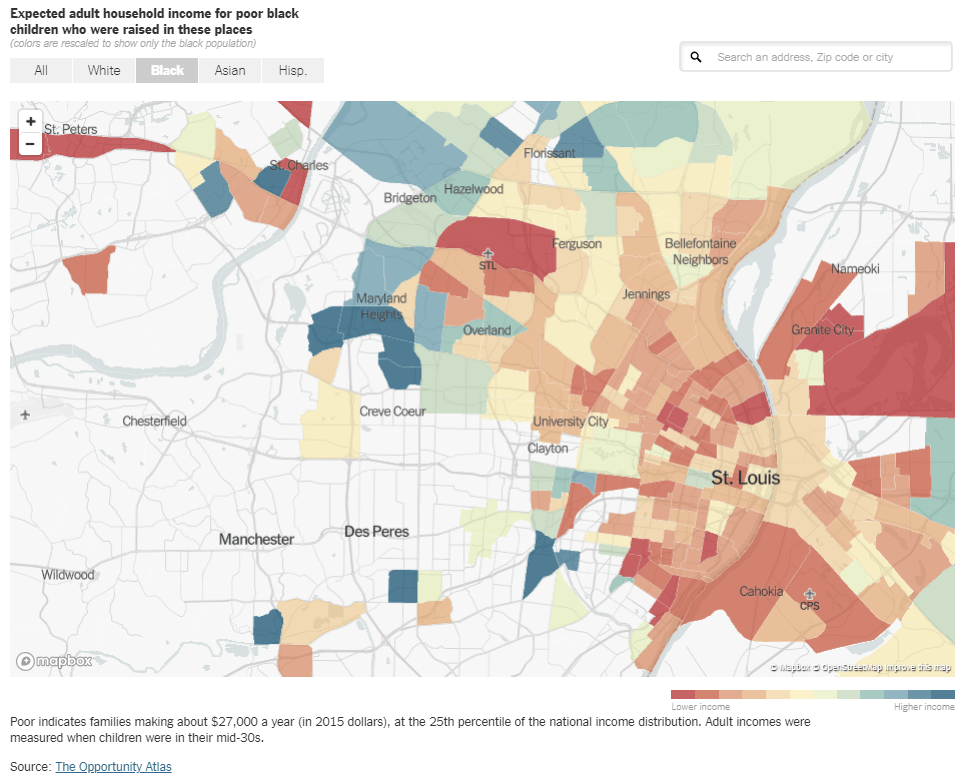We know that where you live in St. Louis has a considerable influence on health. Children born into low-income areas with fewer resources are expected to have poorer health and live shorter lives than more affluent children in a zip code a few miles away.
Now, thanks to a new, sophisticated data tool created by researchers at Harvard University and Brown University in partnership with the U.S. Census Bureau, we can also determine specific census tracts that have better potential to raise a child out of poverty.
The new interactive Opportunity Atlas can pinpoint specific neighborhoods nationwide where children of all backgrounds living in poverty have the best shot at earning more as adults. The Opportunity Atlas includes recent average annual adult incomes for the children who grew up in those areas.
As reported by The New York Times, the Atlas promises to be a critical tool, with potential to inform future policy on community investment, inclusion, mobility, and affordable housing, both nationally and in St. Louis. These critical issues were addressed in the recent community report Segregation in St. Louis: Dismantling the Divide.
A report that accompanies the Atlas also presents important findings on the targeted use of housing vouchers to help families move into neighborhoods characterized by greater economic mobility. Poor children whose families were randomized to receive an offer of an Affordable Housing Voucher to move to such neighborhoods would have $200,000 more in lifetime earnings compared with low-income children raised in low-mobility areas.

The orange and light orange areas in the above Index of Exclusivity show that many areas of high opportunity in the St. Louis region are inaccessible to low income and/or African American families.
These findings complement the Segregation in St. Louis: Dismantling the Divide report. The report recommends local policy changes and investments to increase mobility into areas of opportunity that are currently inaccessible to low income and/or African American renters or home buyers in our region (see map, right).
Raj Chetty and Nathan Hendren at Harvard and John Friedman at Brown created the Atlas by tracking the lives of 20 million Americans now in their 30s. They found where people lived as children created vastly different chances for their upward mobility as adults – even for children living just blocks apart.
The Atlas can also help reveal “opportunity bargains” – or affordable neighborhoods that yield better economic mobility outcomes for children. By identifying such neighborhoods, local entities can identify what systems work in those areas and then replicate those systems to boost outcomes in other neighborhoods.
The Atlas can be adjusted to examine mobility by race. Overall, African American children living in poverty in St. Louis grow up to earn significantly less than white children living in poverty in the same neighborhoods – even those neighborhoods with high upward mobility.
The Atlas shows a few bright spots regarding upward mobility for poor African American children in St. Louis. Valley Park, Kirkwood, Shrewsbury, Maryland Heights, and Florissant in St. Louis County show much higher adult incomes for poor African American children who grew up within specific neighborhoods in those suburban cities.
Want to learn more?
Explore the interactive Atlas of Opportunity mapping tool.
Read the full report by Chetty, Friedman, and Hendren.
Read this St. Louis American Op-Ed on housing mobility and Housing Choice Vouchers.
Read this St. Louis American Op-Ed on how source of income discrimination harms housing mobility.
Read the complete list of recommendations in Segregation in St. Louis: Dismantling the Divide.
